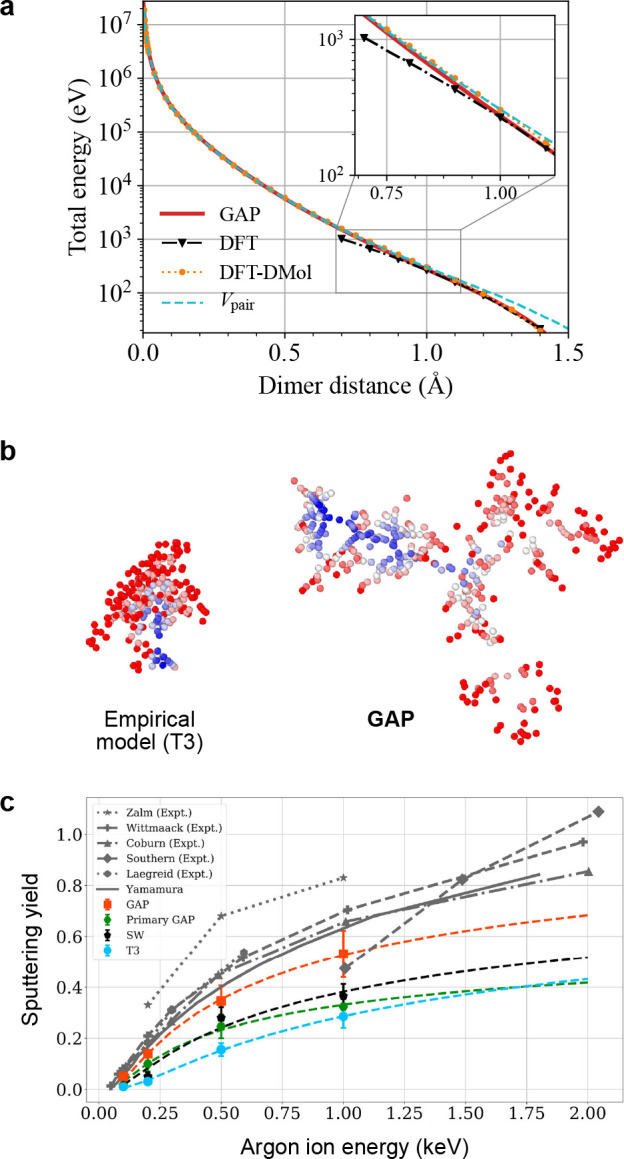Figure 36.

Simulations of matter under extreme conditions using GAP: here, exemplified by radiation damage. Panel a shows the construction of a GAP for tungsten with a repulsive term at very short interatomic distances, for which reference data are computed using DMol rather than the standard DFT method;318 note the energy scale reaching up to MeV energies. Reprinted figure with permission from ref (318). Copyright 2019 by the American Physical Society. Panel b is a selected example of a single impact event in silicon, simulated by an empirical interatomic potential (left-hand side) and a GAP (right-hand side).319 Only defect atoms are shown, with the color corresponding to the time the defect was generated, referenced to the primary impact event. Panel c shows the sputtering yield obtained in simulations with various force fields compared to experimental data (gray). The GAP model containing a pair potential term that is repulsive up to MeV energies (red) predicts a notably higher sputtering yield than the other force-field models. Reproduced (adapted) from ref (319); original figures published under the CC BY 4.0 license (https://creativecommons.org/licenses/by/4.0/).
